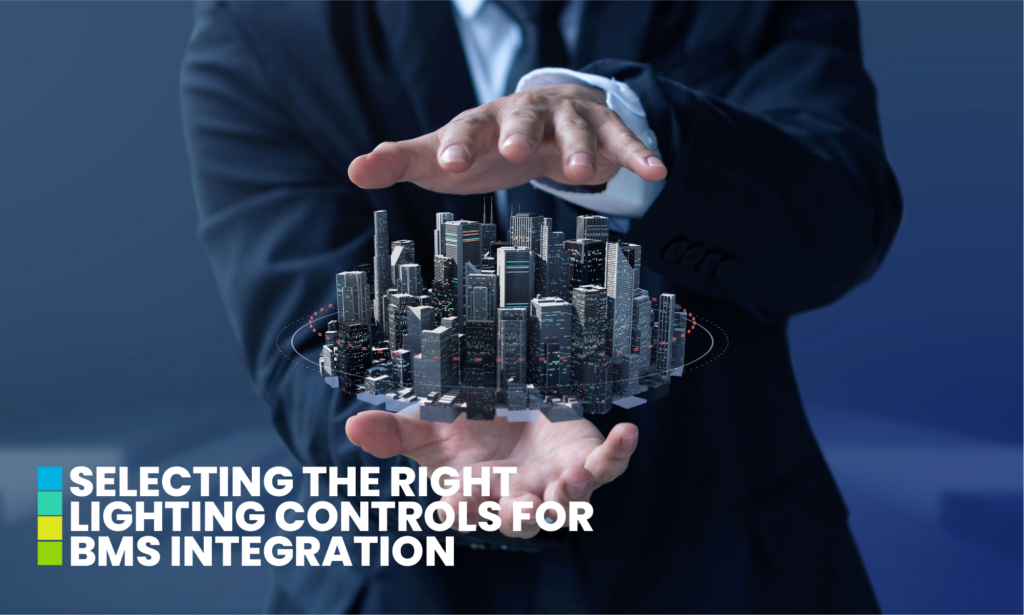Lighting Controls for BMS Integration: How to Choose the Right Controls for Your Building

When it comes to building automation systems, lighting controls play a crucial role. They not only help in saving energy but also enhance occupant comfort and provide additional functionality. However, selecting the right lighting controls for BMS integration can be quite challenging. Don’t worry, though, we’ve got you covered! In this blog post, we’ll be sharing our recommendations on how to choose the right lighting controls for BMS integration so that you can make an informed decision.
Choosing the Right Lighting Controls for Your BMS Integration
With the increasing demand for energy efficiency and sustainability, integrating lighting controls with the building management system (BMS) has become a popular solution. However, with the wide variety of lighting control options available in the market, choosing the right controls for BMS integration can be a daunting task. Here are some key considerations to help you choose the right lighting controls for your BMS integration needs.

- Determine your lighting control needs: Before selecting lighting controls for BMS integration, it’s essential to determine your lighting control needs. Consider factors such as the type of lighting, the number of zones, the level of control required, and the energy-saving potential. Identifying your lighting control needs will help you determine the type of lighting controls required and guide your decision-making process.
- Identify the BMS system: Identify the BMS system that you will be integrating the lighting controls with. Ensure that the lighting controls are compatible with the BMS system and can communicate seamlessly with it.
- Consider the type of lighting controls: There are several types of lighting controls available in the market, such as occupancy sensors, daylight sensors, time schedules, and manual dimming. Consider the type of lighting controls that best meet your lighting control needs and are compatible with the BMS system.
- Evaluate the control protocol: The control protocol is an essential aspect of BMS integration with lighting controls. Ensure that the lighting controls use a protocol that is compatible with the BMS system. Some common protocols used in lighting controls include BACnet, LonWorks, and Modbus.
- Determine the level of integration: Determine the level of integration required between the lighting controls and the BMS system. Some lighting controls can provide basic control functions, while others can offer advanced features such as occupancy sensing, daylight harvesting, and individual fixture control. Consider the level of integration required to meet your lighting control needs.
- Consider the scalability: Consider the scalability of the lighting controls. Ensure that the lighting controls can accommodate future expansion needs and that they can integrate with other systems, such as HVAC, security, and fire alarm.
- Look for energy efficiency: Look for lighting controls that provide energy-saving potential. Energy-efficient lighting controls can provide significant cost savings and improve building sustainability.
- Evaluate the vendor: Evaluate the vendor and their lighting control solutions. Look for vendors with experience in lighting controls for BMS integration and ensure that their solutions meet your lighting control needs, compatibility, scalability, and energy efficiency requirements.
Why should you consider Lumos Controls for the BMS system integration?
The integration of lighting controls with the building management system is made effortless for building owners and facility managers through Lumos Controls, enabling easy centralized monitoring and simplified operations.
With Lumos Controls, you can:
- Integrate with almost all popular BMS protocols
- Control & monitor lights from the centralized building dashboard
- Save cost on maintaining & operating two separate systems
- Implement solution on-premise with our unique edge-computing implementation and remove operational dependency on cloud
- Usher in features like human-centric lighting to improve occupant comfort & productivity
- Save energy and improve lighting operation by adding Lumos Controls’ smart devices
- Utilize smart sensors for other building operations together with lighting

Final Thought
Choosing the right lighting controls for BMS integration can be a challenging task, but with careful consideration of your lighting control needs, BMS system compatibility, control protocol, level of integration, scalability, energy efficiency, and vendor evaluation, you can ensure that you select the right lighting controls that meet your requirements.
At Lumos Controls, we offer lighting controls that make the integration process effortless for building owners and facility managers, enabling easy centralized monitoring and simplified operations. By choosing Lumos Controls, you can enjoy a wide range of benefits, such as integration with almost all popular BMS protocols, control and monitoring of lights from the centralized building dashboard, cost savings on maintaining and operating two separate systems, implementation on-premise with our unique edge-computing implementation, and energy-saving potential.
Feel free to contact us for more details.